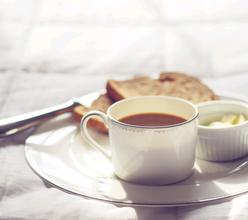Description of Flavor and Flavor of Ramon Coffee Bean in Colombia
Oil content of Ramon coffee beans
Famous for its taste and high taste. Coffee production in Colombia plays a very important role in the country's economic life, with annual exports of about US $1.5 billion, accounting for a large proportion of its foreign trade.
Producing area: Lindong Lintong,Toba area, South Toba Lake producing area
Variety: Catimor
Altitude: 1300-1500 m
Harvest: early 2015
Treatment: traditional wet planing method, also known as semi-washing method, the latter part of the natural sun
Grade: Grade 1 DP
Cup test: test M and M + in two baking degrees
Dry aroma: grape, BlackBerry, chocolate, cream, natural spices, nuts, grease
Wet fragrance: cinnamon, oil, chocolate, caramel sweet, spices sweet.
Sipping: obvious stickiness of fat, sweet caramel, chocolate, black sugar, sweet spices, obvious aftertaste of spices, and chocolate and cocoa aftertaste.
Baking reference: medium depth
Authentic Colombian coffee is brewed with a color as clear as emerald. It is like the masterpiece of the greatest tune, which matches sour, bitter and sweet just right. After drinking, the fragrance fills the whole mouth. The aroma comes out of the nose again. It is so soft and arrogant that it occupies your taste buds, your mind and even your soul as quickly as possible. Let you be captured by it unconsciously.

Important Notice :
前街咖啡 FrontStreet Coffee has moved to new addredd:
FrontStreet Coffee Address: 315,Donghua East Road,GuangZhou
Tel:020 38364473
- Prev

Introduction to the taste of Brazilian Minas sun-tanned bourbon coffee beans with a sweet and bitter taste
Brazilian Minas Yellow bourbon Coffee Bean Grinding scale treatment varieties taste including all coffee beans grown in Brazil, except for Sandos, Brazilian beans are mostly cheap and good coffee. Can be used for mass production of comprehensive coffee beans, most of which are re-roasted. The main raw material of instant coffee is also Brazilian coffee beans. When the coffee bean germ is very fresh, it is artificially refined to make it natural.
- Next

Description and treatment of Kilimanjaro Coffee Flavor introduction of Variety Grinding scale
Fresh is the most important factor in buying Kilimanjaro coffee beans. There are several steps to judge whether the beans are fresh or not: 1. Grab a handful of coffee beans and feel whether they are solid beans with the palm of your hand. 2. Whether it is enough to smell the aroma close to the nose. 3. Put a bean into your mouth and bite it twice. There is a clear sound indicating that the bean is well preserved and not damp. If you want to buy a single item
Related
- Detailed explanation of Jadeite planting Land in Panamanian Jadeite Manor introduction to the grading system of Jadeite competitive bidding, Red bid, Green bid and Rose Summer
- Story of Coffee planting in Brenka region of Costa Rica Stonehenge Manor anaerobic heavy honey treatment of flavor mouth
- What's on the barrel of Blue Mountain Coffee beans?
- Can American coffee also pull flowers? How to use hot American style to pull out a good-looking pattern?
- Can you make a cold extract with coffee beans? What is the right proportion for cold-extracted coffee formula?
- Indonesian PWN Gold Mandrine Coffee Origin Features Flavor How to Chong? Mandolin coffee is American.
- A brief introduction to the flavor characteristics of Brazilian yellow bourbon coffee beans
- What is the effect of different water quality on the flavor of cold-extracted coffee? What kind of water is best for brewing coffee?
- Why do you think of Rose Summer whenever you mention Panamanian coffee?
- Introduction to the characteristics of authentic blue mountain coffee bean producing areas? What is the CIB Coffee Authority in Jamaica?

